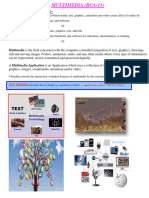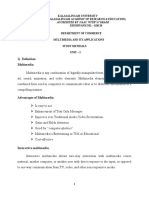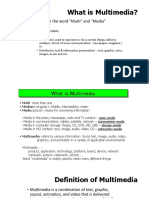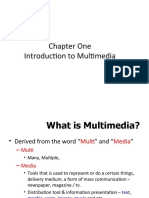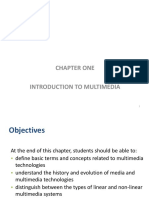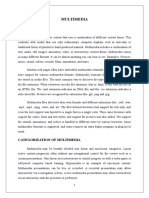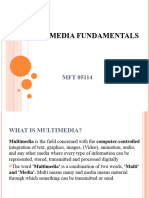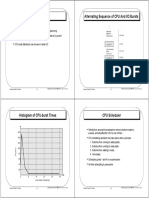0% found this document useful (0 votes)
30 views22 pagesIntroduction To Multimedia
Multimedia is a combination of various media elements such as text, audio, graphics, video, and animation used for communication. It can be classified into interactive and non-interactive types, with applications in education, advertising, entertainment, and journalism. The stages of multimedia production include research, scripting, storyboarding, media collection, programming, and testing.
Uploaded by
bariaminaxi396Copyright
© © All Rights Reserved
We take content rights seriously. If you suspect this is your content, claim it here.
Available Formats
Download as PPTX, PDF, TXT or read online on Scribd
0% found this document useful (0 votes)
30 views22 pagesIntroduction To Multimedia
Multimedia is a combination of various media elements such as text, audio, graphics, video, and animation used for communication. It can be classified into interactive and non-interactive types, with applications in education, advertising, entertainment, and journalism. The stages of multimedia production include research, scripting, storyboarding, media collection, programming, and testing.
Uploaded by
bariaminaxi396Copyright
© © All Rights Reserved
We take content rights seriously. If you suspect this is your content, claim it here.
Available Formats
Download as PPTX, PDF, TXT or read online on Scribd
/ 22





